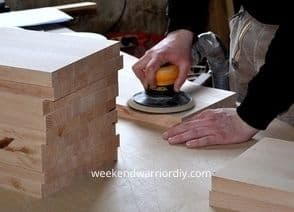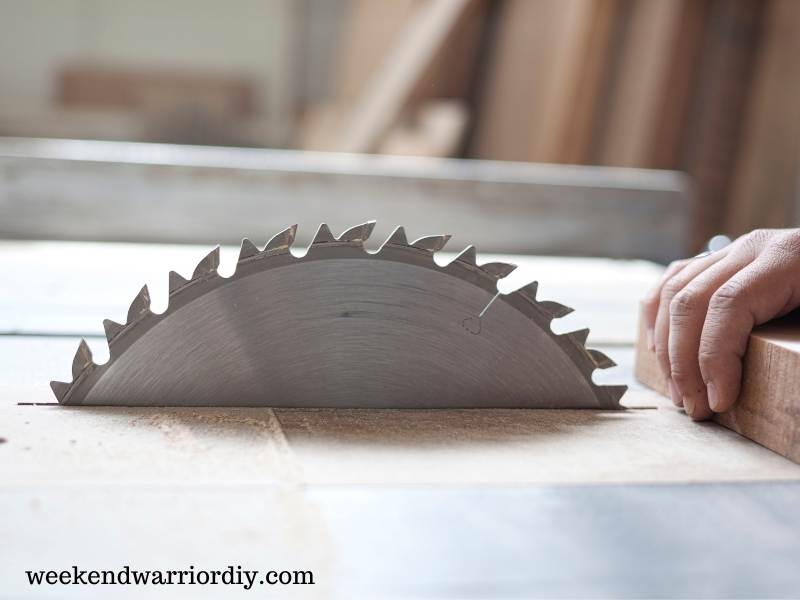Cutting wood with a bandsaw can be tricky and takes some time to master. The saying ‘practice, practice, practice’ applies when doing quality cuts using a bandsaw. I know this from experience and hope to help you learn how you can cut straight with your bandsaw.
To cut straight with a bandsaw you must ensure the blade is both tight and sharp, the bandsaw table is level and square to the blade, and you must use a fence when required and freehand when not. It’s best to practice on shorter boards before trying to cut longer ones.
So, by that information, you might think once you have those things sorted out, your cuts should be perfect every time. Unfortunately, that’s not the case. Because of the length of the blade, it’s just the nature of how bandsaw blades cut. It’s called drift. It’s not the wood that causes this to happen but rather the blade that will naturally drift.
Luckily, you can do some things to help you to cut straight almost every time. If you’re still with me, let’s get right into it and see what you can do about this issue called drift.
Can a Bandsaw Cut Straight?
Before we get into cutting straight with your bandsaw, the question should be asked whether or not a bandsaw can even cut straight?
The answer is yes and no.
It’s going to take some time with you getting to know how your bandsaw performs. Once you have ensured you have done everything in your power, then it’s just knowing how and when your bandsaw blade will start to drift.
Does it happen when you push too hard or when the wood is too thick?
Those are the things you will start to figure out the more you use the tool.
How to Cut a Straight Line Using a Bandsaw
Here are 6 tips to help you cut straighter on your bandsaw.
- It’s very important to ensure the blade is tight, not only for more accurate cuts but for the user’s safety. When checking the tightness of a bandsaw blade, press lightly on the side of the blade. If the blade pushes in more than ¼”, then you must tighten the blade until it doesn’t push in more than ¼”.
- Having a sharp blade helps the blade cut through the wood easier which also leads to straighter cuts. A sharp blade will also be kinder to the wood creating a cleaner cut.
- When you first set-up your table saw, you should make sure the table is level and square to the blade. If you use the bandsaw quite often or you’ve just changed the blade, you should use a level and a square to check this. What you want to happen is the blade and the table should sit at a 90-degree angle.
- You can use a fence/guide or cut freehand. Using a fence when cutting thin wood works quite well however, most bandsaws will drift at some point if the wood is more than 5” or 6” long. Once you know your saw, you can then determine if it’s okay to use a fence or if you should cut freehand.
- The problem with using a fence sometimes is it’s hard to catch and correct the cut when it does start to drift. When freehand, obviously it’s much easier to do so.
- Consider purchasing a resaw guide. A resaw guide is much higher than a fence, which works great if you are cutting boards while they are on their side.
- A resaw guide is about 7” high and is slightly curved. This works well so you can adjust the board once you notice the blade is starting to drift.
If you’re interested in stepping up your bandsaw game, then you should consider purchasing a resaw guide. Kreg is known for making excellent products for the workshop. Check out this resaw guide over on Amazon when you’re done reading.
By now, you realize cutting a straight line is not a guarantee when cutting with a bandsaw. It takes time to learn the nuances of your bandsaw but once you do, cutting almost perfectly straight will be a breeze.

What is a Resaw Cut on a Bandsaw?
I mentioned using a resaw guide above and thought I should explain what a resaw cut is, just in case any new bandsaw owners aren’t familiar with this term. Here’s my explanation.
A resaw cut is thinning the board. You’re not cross cutting and you’re not ripping the board.
The cut is along the width. For example, if you have a 2”x4” board, which measures 1.5”x3.5” and you cut the thickness down, you then have 2- ¾”x 3.5” boards that’s a resaw cut.
A bandsaw is probably the best power tool you can own in your workshop for completing this type of cut. With it’s long and thin blade, you’ll be able to cut all sizes of lumber with minimal loss of wood from the thinner blade.
If you’re making cabinets, you can use your bandsaw to cut veneers by following the resaw method of cutting. What an excellent tool the bandsaw is!
I hope I explained that properly for you to easily understand.
Conclusion
To sum things up, cutting a straight line with a bandsaw is not a given – as much as you’d like it to be.
It’s the nature of the tool. It’s not impossible by any means, you just need to practice operating your bandsaw and over time, you’ll master the natural drift it might have when cutting.
Thanks for reading and good luck with your woodworking projects!
Related Posts
Can You Do Woodworking without a Table Saw?



